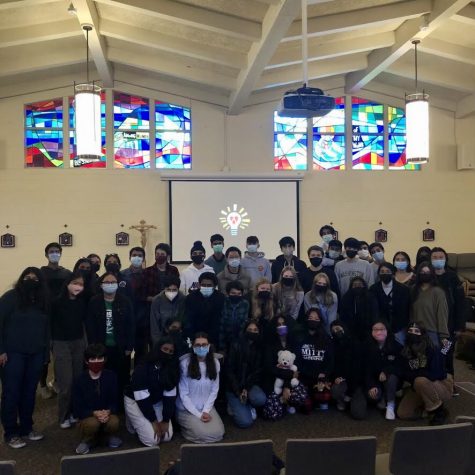Mapping Out the Future: Changes to the Mitty Advocacy Project
An overview of MAP's new structure with the start of the 2021-2022 school year.
October 18, 2021
Since its founding in 2008, the Mitty Advocacy Project (MAP) has grown from a tiny collection of students to one of the largest clubs on campus. Its growth has led to various structural and operational adjustments over the years. However, MAP’s core mission of research, education, and advocacy has remained the same and has included activities such as meeting with legislators, awareness campaigns, and international advocacy.
This year, there have been major changes to the structure and focus of the organization. In essence, the target of these changes is consolidation and integration. According to senior Jay Gupta, the structure of MAP had become overly complicated due to various projects that had branched outwards; therefore, the club now seeks to make it “more compact and more accessible.” Last year, five broad issue teams (Environmental Justice, Criminal Justice Reform, Gun Violence Prevention, Immigration Reform, and Mental Health Reform) addressed issues in their category, alongside other initiatives such as MAPx, which focused on on-campus advocacy. However, with the various groups, the organization structure became overwhelming at times, especially with smaller groups within the broader issue teams. As such, the changes to MAP’s structure aim to merge those teams into three distinct groups with topics to be voted on, with MAPx serving as a flexible team to work on miscellaneous initiatives.
Through this, the club seeks to consolidate its focus and delve deeper into the chosen topics. An inevitable effect of this change is that some topics may not get a dedicated section as before. However, senior Amy Gruber notes that the flexible issue team will specifically work on topics outside of the primary three, focusing on each topic for a month or two. According to junior Ahilan Karuppusami, who works to advocate for Environmental Justice, the changes will allow the members to “delve deeper into topics and see more nuances,” as well as spend more time addressing various logistical challenges. Specifically, he recounts how last year when meeting with legislators they had overlooked some details and were unable to discuss with them as thoughtfully as they had hoped, something he hopes the changes will remedy this year. Also important to note is that there will be more moderators this year, up to six, which will help balance the ratio of moderators to members.

In addition to solidifying and merging the teams, MAP will be integrated under Campus Ministry. As a result, there will be a greater focus on the liturgical theme this year. Gruber has stated MAP will broadly focus on how the theme of “Home” applies to issues that they will address, especially in terms of environmental issues. She explains that the environment is a “home” to all people which links to the idea of Mitty as our home physically, mentally, and spiritually—something especially important given the return to campus following months of distance learning. The social media accounts for MAP and Campus Ministry will also be integrated this year. Additionally, MAP will focus more on reaching out to the Mitty community, doing so through awareness weeks about important issues and by having more speakers this year on various issues.
Although MAP will undergo a variety of restructuring efforts to further integrate it with the community and be accessible to members through consolidation, the aim of the organization continues to remain the same: a threefold approach of legislative advocacy, grassroots initiatives, and education campaigns, summarized by the acronym “AGE.”
Even with the challenges brought on by these changes, such as forming different groups and choosing topics to prioritize, members are hopeful that, for this year, they will be able to deepen their knowledge and also share their findings and proposals with others. For Gupta, this means employing a data-driven approach to legislation for a better understanding of the nuances of the process of passing bills; for Gruber, this means helping more people get involved with the club and grow their knowledge of social issues and advocacy skills; for Karuppusami, this means sitting down in person and talking with representatives and senators in more depth. Whatever the specific focus, members see this change as both a challenge and an opportunity to make MAP’s structure more accessible and effective, helping them to better address the organization’s core mission: using advocacy and education to strive for social justice.
